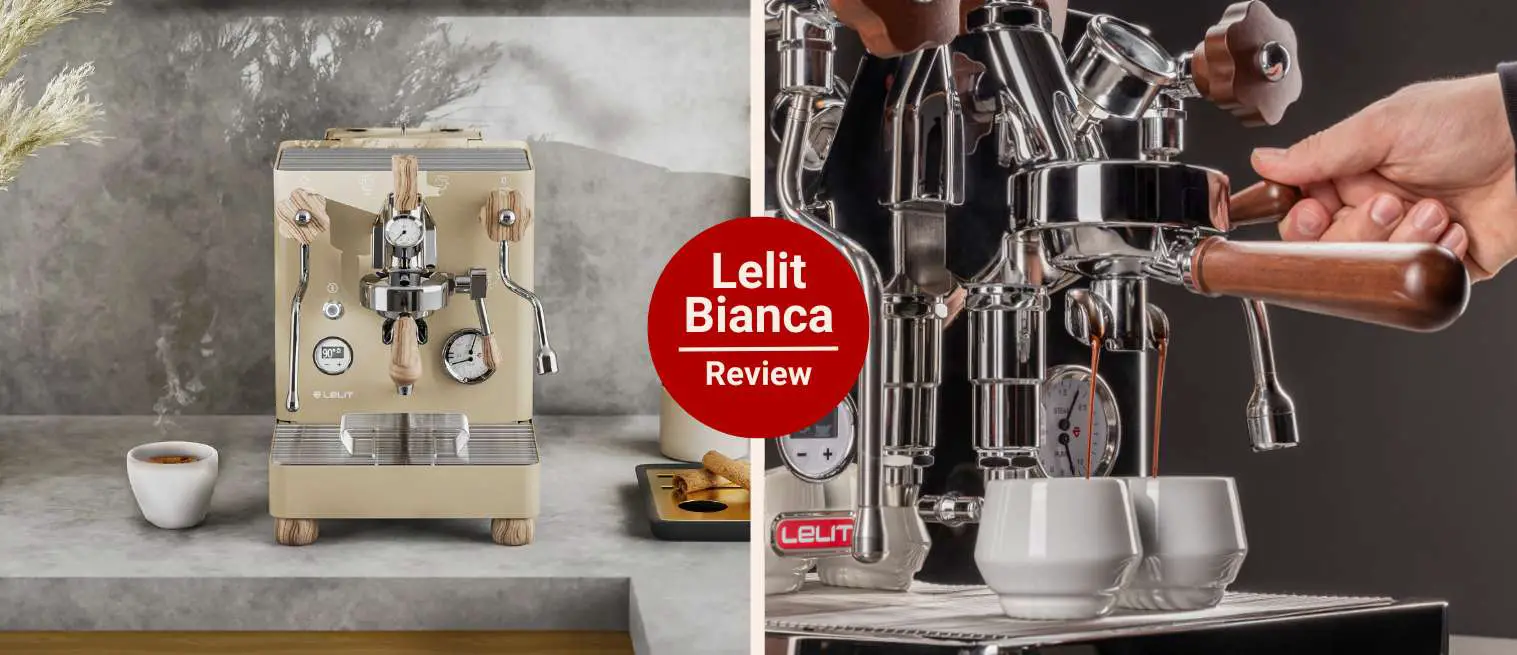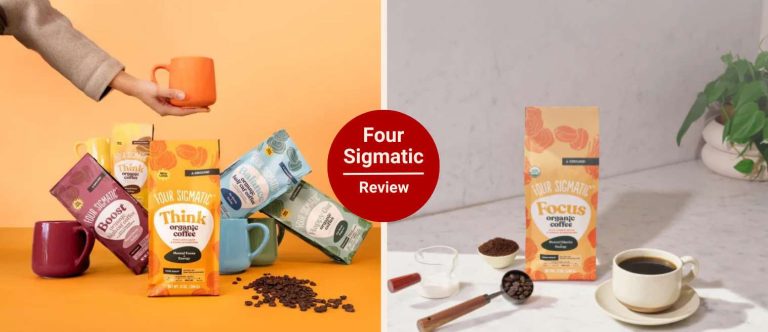Lelit Bianca V3 Review 2025: Should You Get It?
Ever looked at an espresso machine and thought, “Whoa… that’s a bit much”?
I remember the first time I saw the Lelit Bianca V3 in a local specialty coffee shop. It was perched on the counter like a showpiece. Gleaming stainless steel body, those wooden knobs catching the light just right.
I wasn’t even shopping for a new machine, but I stopped mid-step, walked over, and stood there. The barista noticed and laughed, “Yeah, she gets a lot of stares.” At that point, I didn’t even know what a flow control paddle was. However, something about it told me this wasn’t your average espresso maker.
If you’ve been eyeing the Bianca and wondering if it’s worth the investment or if it’s too much machine for home use, this “Lelita Bianca V3 Review” is for you.
You’ll find insights on build quality, performance, how it compares to other prosumer models like the ECM Synchronika and Lelit Mara X, and most importantly “who this machine is really for.”
Serious home baristas who love control
Rating:
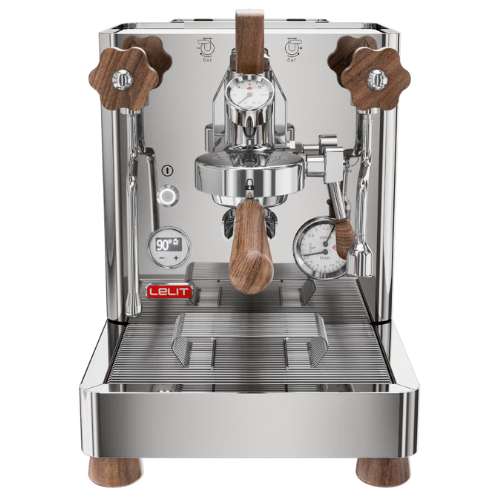

Lelit Bianca V3
Build Quality & Design – It’s a Tank (But a Pretty One)
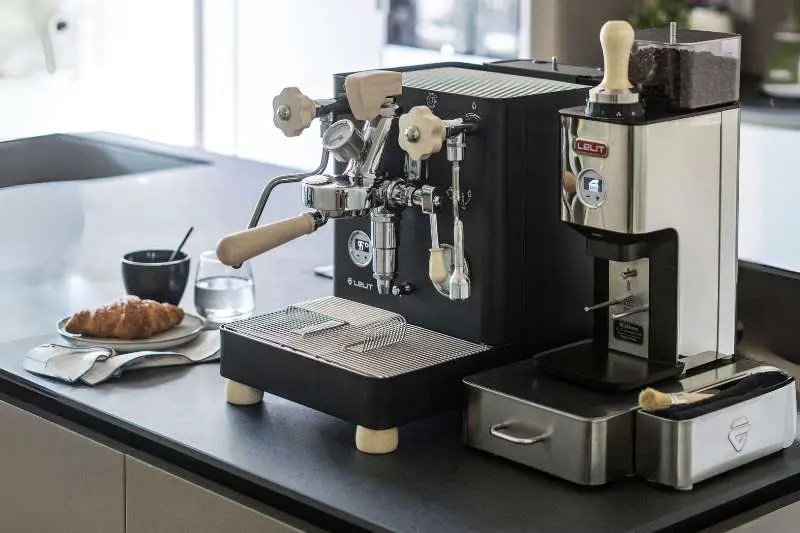
| Quick Overview: Design & Size |
|---|
| Premium materials throughout – Features a polished stainless steel body with walnut wood accents that look and feel high-end. |
| Thoughtful craftsmanship – Every touchpoint (paddle, portafilter handle, brew lever) feels solid and intentional—not cheap or flimsy. |
| Heavy-duty construction – Weighs around 60 lbs (27 kg); very sturdy but not easy to move once set in place. |
| Quiet and stable operation – Thanks to the rotary pump and hefty frame, it stays put and runs quietly without rattling. |
| Corrosion-resistant stainless steel – Durable and dent-resistant, even when knocked with a tamper. |
| Large footprint warning – The 16-inch depth plus an external water tank makes it a space hog on smaller counters. |
| Measure before you buy – The machine’s size nearly made me return it, so double-check your kitchen space first. |
This machine not only looks but also feels premium. The polished stainless steel case practically gleams in the morning light, and those walnut accents? Absolutely stunning. Every part you touch, from the paddle, portafilter handle, and brew lever, feels thoughtfully crafted.
There’s a tactile experience in using this machine that you don’t get from cheaper models with plastic knobs or fake chrome finishes.
Built Like a Tank
The Bianca clocks in around 60 pounds (or roughly 27 kilos), which is… a lot. It’s not the kind of machine you slide around on the counter to clean underneath.
I legit pulled a muscle the first time I tried to scoot it back while filled with water. But with that heft comes serious build quality. You’ve got a dual boiler setup inside. Meaning one for brewing, one for steaming, and a rotary pump that makes this thing whisper-quiet.
It doesn’t vibrate across the counter like some machines I’ve owned in the past. The E61 group head adds even more metal mass, which helps regulate brew temps, though it also adds to the bulk.
And yeah, the stainless steel isn’t just for looks it’s resistant to corrosion and feels bulletproof. I’ve accidentally knocked a tamper into the drip tray and not even left a mark. Well, imagine doing that on a plastic machine and see what happens.
The Portability Quirk That Nearly Made Me Return It
I knew it was big, but I didn’t realize how big it would feel on my countertop. The machine is about 16 inches deep, plus an external water tank that adds another 3 or so depending on where you mount it. So, if you’ve got a tight kitchen, though, definitely measure your space before you order.
Performance: What It’s Like to Pull Shots on the Bianca V3
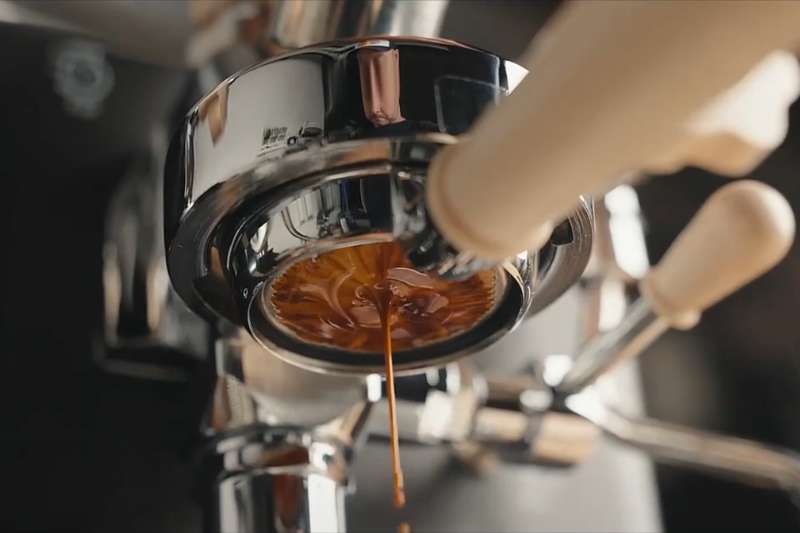
| Quick Overview: Performance |
|---|
| Full warm-up takes ~25 minutes – Boilers heat quickly, but the E61 group head needs extra time to stabilize. |
| Smart plug recommended – Automating startup helps avoid impatient mistakes and ensures consistent extraction. |
| Flow control paddle = game changer – Allows manual control of brew pressure throughout the shot. |
| Great for espresso experimentation – Adjust preinfusion, ramp-up, and pressure taper to highlight acidity or sweetness. |
| Learning curve for beginners – Expect a few rough shots early on, especially if you’re new to pressure profiling. |
| Useful tools: mirror + shot timer – These help track paddle movements and shot flow for better consistency. |
| Once mastered, shots improve fast – With practice, the Bianca lets you fine-tune your espresso far beyond what most machines allow. |
This machine takes time to warm up. I’m talking around 25 minutes from cold to fully dialed-in, grouphead-in-the-zone kind of ready.
Sure, the boilers hit temp in about 10–13 minutes. However, if you want consistent extraction and proper heat saturation, you wait for the full warm-up.
I made the mistake early on of pulling a shot after just 15 minutes because I was impatient. As a result, I got an underwhelming crema and a sour tang that didn’t belong in my cup. Now I leave it plugged into a smart outlet that kicks on before I wake up (problem solved).
Paddle Flow Control: The Best Kind of Obsession
The flow control paddle on the Bianca gives you real-time control over brew pressure. I’d consider it one of its most powerful features.
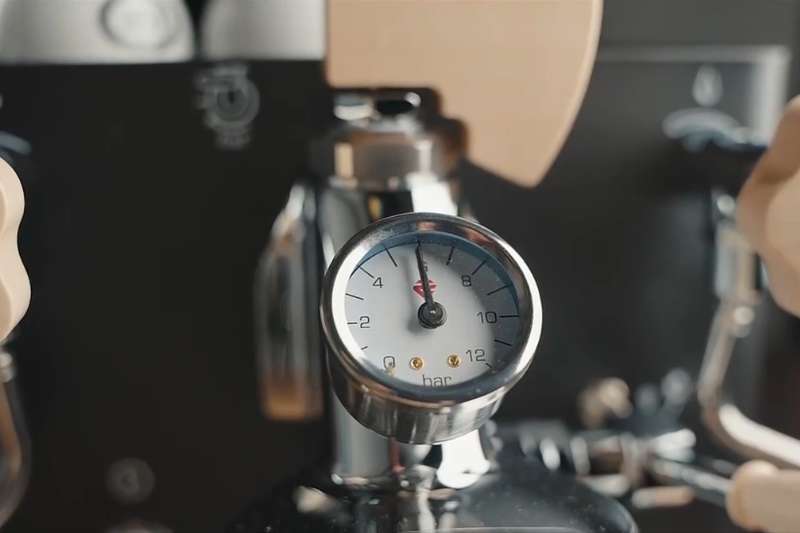
You can start your shot with a gentle preinfusion, then ramp up to full pressure, or go straight to 9 bars if the roast calls for it.
There’s a bit of a learning curve, especially if you’re new to flow profiling. However, it quickly becomes second nature.
With a bit of practice, you’ll be able to bring out more acidity, balance sweetness, or reduce bitterness depending on your pressure curve.
Pro tip: Pair the paddle with a mirror and a shot timer (or scale with timer) to dial in your technique and track consistency.
The Rotary Pump: Sweet, Sweet Silence
The Bianca’s rotary pump is impressively quiet, noticeably more so than machines with vibration pumps. It’s a subtle feature but one that makes a big difference, especially during early morning brews.
Expect to Ruin Some Shots Until You Get The Hang of It
I wrecked my first week of espresso shots on this thing. Between the heat-up guessing game, paddle overcorrections, and inconsistent grind size (blame my old grinder), I had more sink shots than drinkable ones.
But those “failures” taught me a ton. I started logging each shot, including dose, temperature, preinfusion time, and flow curve, and slowly, it improved.
Notes: Pulling shots on the Bianca isn’t plug-and-play. But if you’re into dialing things in and chasing flavor like a nerd on a mission, this machine turns espresso-making into a craft.
Steam Power & Milk Frothing
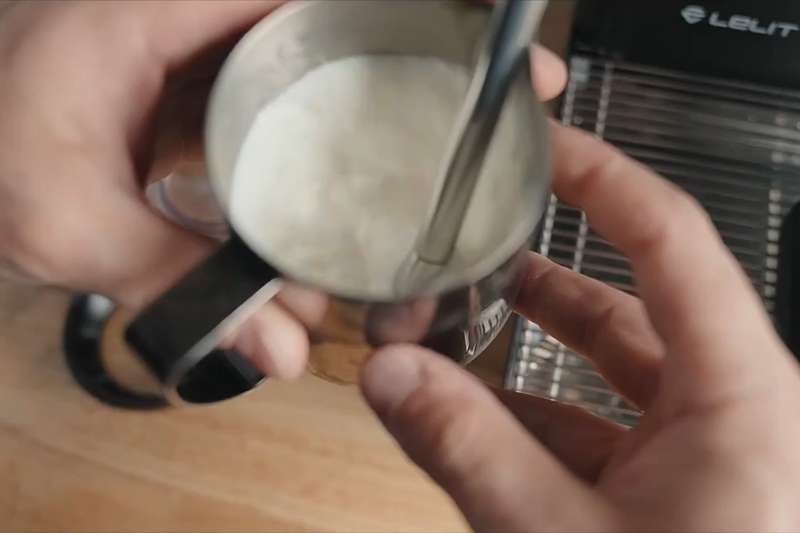
| Quick Overview: Steam Power & Frothing |
|---|
| Pro-style steam wand – Delivers strong, dry steam with precise control via the steam knob. |
| Quick steaming time – Heats 170ml of milk to 60°C in about 27–28 seconds, consistently. |
| Full control over steam output – Easily throttle pressure for small or large milk volumes. |
| Dual boiler advantage – Steam milk while pulling shots—no recovery time needed like with HX or single boiler machines. |
| Comparable to commercial machines – Slightly less aggressive than a café setup, but very close in performance. |
| Produces excellent microfoam – Dry steam and steady pressure help create ideal texture for latte art. |
| Purge the wand every time – Not self-cleaning, so purging before and after use is a must. |
The steam wand on the Lelit Bianca V3 is a pro-style wand with serious power behind it. At first, I underestimated how quickly it could heat milk and ended up overshooting the temp and had to start over.
Once you get the hang of it, it becomes easy. The steam knob gives you full control. For this reason, you can throttle it down for smaller milk volumes or crank it up for larger pitchers.
I usually steam about 170ml of milk for my cortado, and it takes around 27–28 seconds to hit 60°C. Pretty consistent.
Just don’t forget to purge before and after each use. Seriously. This thing is powerful, but it’s not self-cleaning.
How It Compares to Commercial Machines?
If you’ve worked on a café-grade machine before (La Marzocco, Rancilio, whatever), the Bianca won’t disappoint. The steam pressure isn’t as aggressive as something you’d find in a busy coffee shop, but it’s surprisingly close.
Honestly, the difference is more about consistency than raw power.
Plus, because it’s a dual boiler setup, you can steam milk while pulling your shot. That alone puts it ahead of most single boiler machines or even HX setups that need time to recover between functions.
The steam is dry, neither wet nor sputtery. You get that nice, steady spin in your pitcher that helps build perfect microfoam.
The LCC (Lelit Control Center): Intuitive or Overkill?
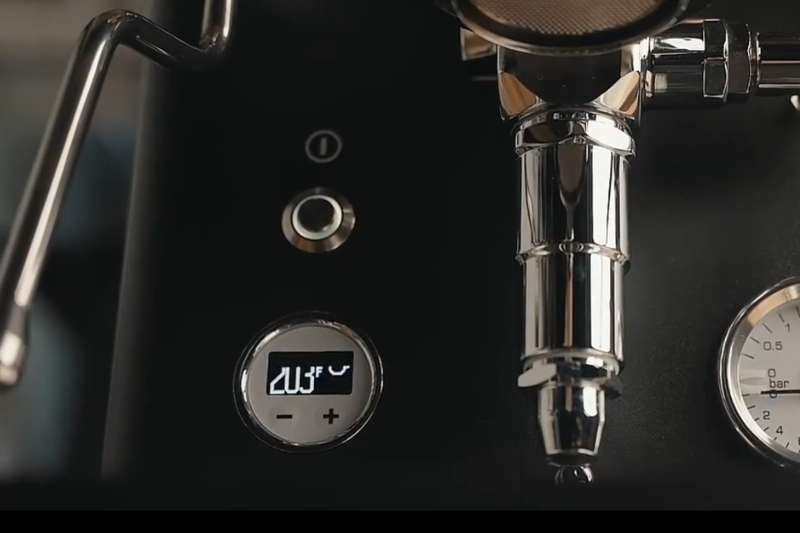
| Quick Overview: LCC Features & Functionality |
|---|
| Customizes all core brew settings – Brew temp, steam boiler temp, preinfusion time, low-flow start/end, and standby mode. |
| Late pressure reduction available – Helps fine-tune longer extractions without over-extraction. |
| No app or Wi-Fi needed – All adjustments are made directly on the built-in OLED screen. |
| Temperature control is precise – Adjust by 1°C or switch to Fahrenheit for finer tuning (~0.56°C increments). |
| Built-in alerts – Notifies when the water tank is low or the filter needs replacement. |
The Lelit Control Center (LCC) is like the command hub for the Bianca. It lets you customize every brewing parameter you’d want control over.
This includes brew temperature, steam boiler temp, preinfusion time, low-flow start and end, standby mode, and even temperature units (Celsius or Fahrenheit).
You can also set a late pressure reduction, which is great for extending extractions without over-extracting. The system doesn’t rely on any app or Wi-Fi connection either. Everything’s done right on the OLED screen using plus/minus buttons.
And it’ll notify you when the water tank is low or when the filter needs replacing. That’s a small but genuinely useful touch.
It’s not quite “smart” in the techy sense, but it is advanced and very precise. You get 1°C increments for temperature or finer control if you switch to Fahrenheit.
The Interface Experience — A Few Hiccups at First
My first impression of the interface was somewhat clunky. It’s not hard to use, but it’s not super intuitive either.
There’s a little learning curve with the button layout and menu structure. Sometimes you need to hold a button longer than expected or remember a sequence (like turning off standby mode with the brew lever raised).
But once I got familiar with the flow, it was easy. Everything stays where you set it, even after powering off. That’s something some machines weirdly reset, so this was a relief.
I still wish the interface had saved presets for profiles. Right now, you can set a detailed routine, but if you want to switch to manual paddle shots and back, you have to remove and reprogram everything.
It’s not a dealbreaker, just something I hope gets improved in a V4.
Some Notable Settings
The Lelit Control Center allows for detailed customization. However, a few settings tend to work well across most use cases.
For medium-light roasts, a 94°C brew temperature, a 6-second preinfusion, and low-flow mode enabled for the first 5 seconds and last 8 seconds offer a balanced extraction profile while allowing manual pressure adjustments via the paddle.
Standby mode is helpful in reducing energy consumption. It lowers the boiler to 70°C, so the machine reheats in about 10 minutes. This is especially effective when combined with a smart plug or brewing schedule.
The auto-off feature defaults to 30 minutes, which can override standby. Disabling it ensures the machine remains in low-power standby mode instead of shutting down completely.
Lelit Bianca V3 vs Other Prosumer Machines
When I was narrowing down my choices for a prosumer espresso machine, I kept coming back to the same short list: the Lelit Bianca V3, the Mara X, ECM Synchronika II, and the Profitec Pro 700.
Each of them brings serious quality to the table. But they also cater to different types of espresso drinkers. So, here’s how they compare:
Lelit Mara X (Simpler, Less Control)
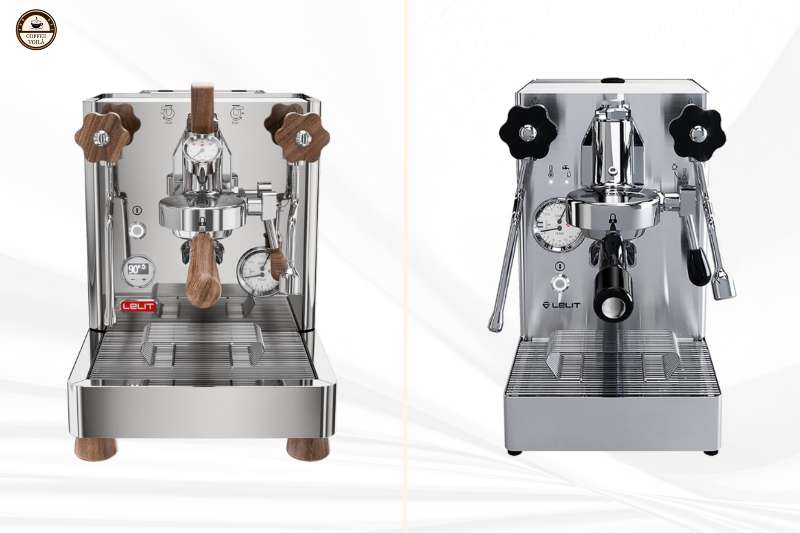
The Lelit Mara X PL62X is hands-down one of the best entry points into E61 machines. It’s compact, sleek, and extremely quiet.
It even solves the classic HX problem of needing cooling flushes between shots by regulating group temp automatically. It runs with a silent vibrational pump, and the PID offers three temp presets: warm, hot, and extra hot.
However, it lacks the fine-tuned controls that really let you push extraction boundaries. There’s no flow control paddle, and you can’t tweak preinfusion beyond the mechanical default.
If you want reliable espresso without tinkering, it’s excellent. If you’re chasing precision or light roast clarity? The Bianca wins.
ECM Synchronika II: Similar Tier, Different Vibe
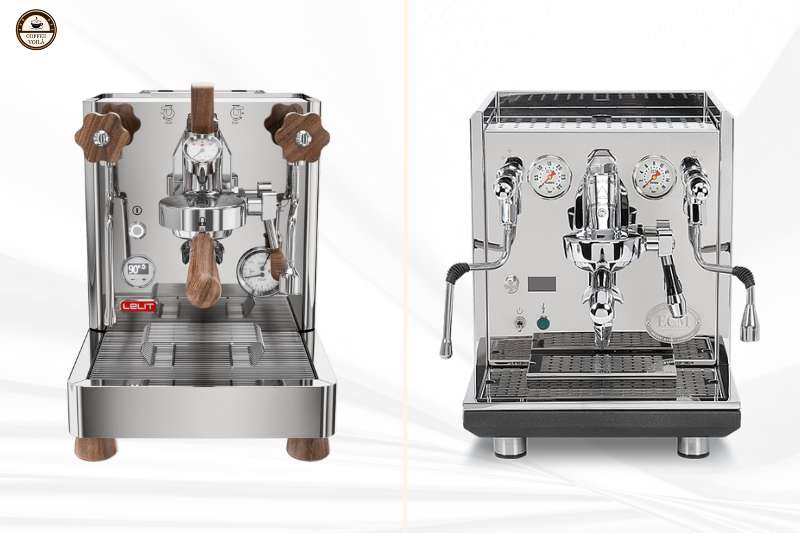
Now, the ECM Synchronika II is a real beauty. It’s a dual boiler machine with a rotary pump, fast 6.5-minute heat-up, and even features like volumetric shot tracking and an OLED display with shot counter and ECO mode.
I love the feel of ECM’s build, German engineering at its finest. What the downside? The Synchronika feels more “automated.”
Plus, it has fewer options for on-the-fly profiling, and I didn’t want to navigate menus for pressure adjustments when a paddle could do it in real-time. Still, if clean, button-based control and rock-solid build are what you’re after, this one’s a top-tier pick.
Profitec Pro 700: German Precision vs Italian Flair
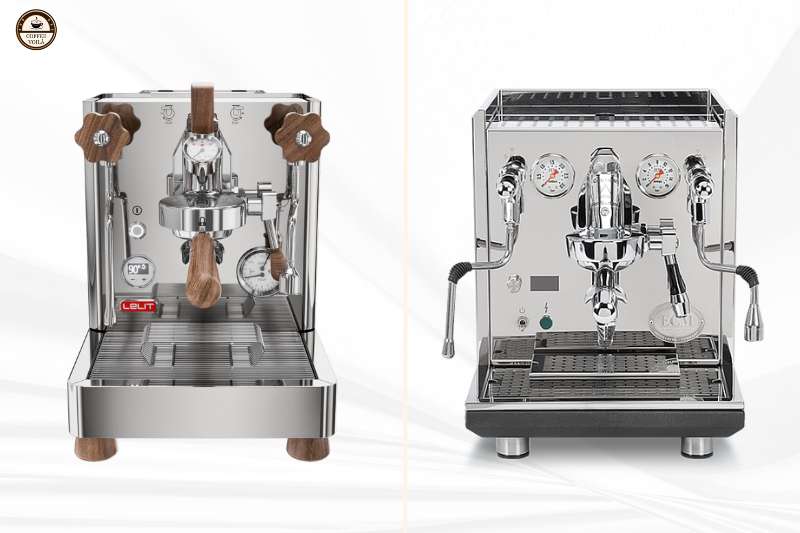
The Profitec Pro 700 is a sibling to the Synchronika. It’s also a dual boiler with PID, rotary pump, and E61 group. But with a more minimalist vibe.
The stainless steel mushroom sleeve in the group head is a nice touch for long-term durability, and I do appreciate the internal layout (it’s very service-friendly).
What tipped me toward the Bianca was the lack of flow control on the Pro 700. Yes, you can add it aftermarket, but that means extra cost and work. Also, the Pro 700’s interface is simpler and has less to tweak.
Last Thoughts: Who Should Buy the Lelit Bianca V3?
The Lelit Bianca V3 is a tool built for control freaks (in a good way). If you’re someone who loves dialing in every single shot, playing with preinfusion, experimenting with flow rates, and tweaking brew temps by the degree, this machine’s got your name all over it.
I recommend it for experienced home baristas who want more than just “press and go” functionality. If you’ve already spent time learning espresso basics and you’re ready to get deep into the fine-tuning side of things, this is a fantastic next step.
You’ll need a solid grinder to match it, by the way. So don’t pair this thing with a cheap one or it’ll bottleneck your results.
That said, this machine isn’t for everyone. If you want a quick morning shot without thinking too hard or you don’t care to experiment with paddle control and pressure profiling it’s probably overkill.
You have a learning curve, and if that sounds exhausting instead of exciting, something like the Mara X or a simple dual boiler might be a better fit.
Anyway, do you have any questions about Lelit Bianca V3? I’d love to hear them in the comments below.
Questions? We Have Answers.
Get answers to a list of the most Frequently Asked Questions.

